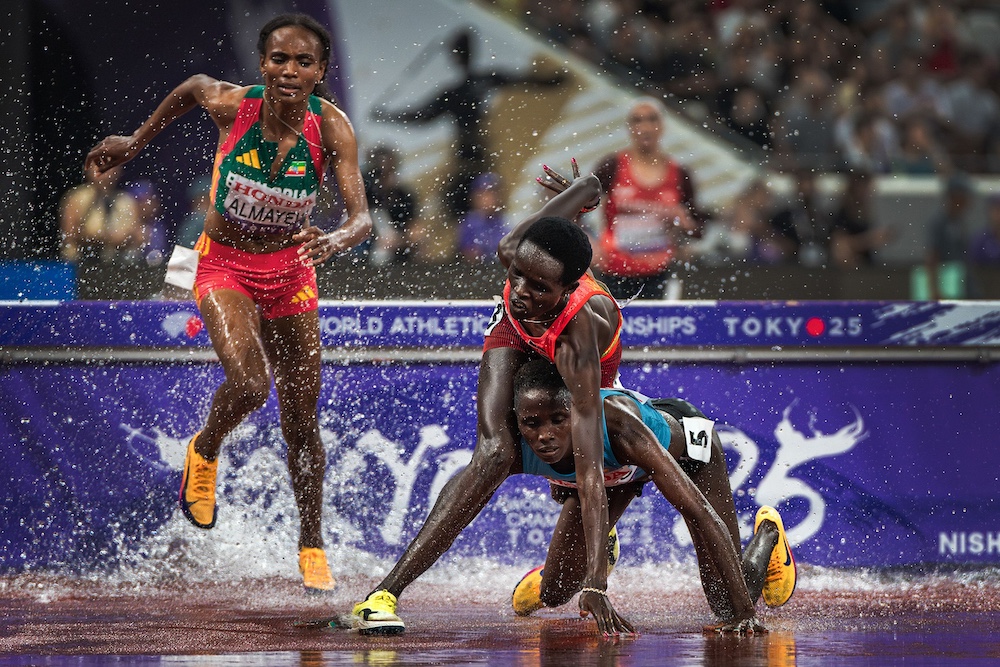Two years ago I wrote an article entitled "Where are the talents of yesteryear?". It was based on a photo of the finish of the men's 1500 m at the 2016 World U20 Championships. (If you wish to have more details you can follow the link and read that article). The present one has a somewhat different motivation.
As you know at the end of each year World and European Athletics nominate the best athletes of the year and there is a special category concerning the rising stars, i.e. young and promising athletes who have distinguished themselves during the year. And while I was perusing the list of past winners I started thinking about what happened to each of them. Did they keep the promise that the award was implying? I decided to find out. Below is the list of the European Athletics Rising Stars since 2007. (In a future post I will go through the list of the World Athletics Rising Stars).
Emir Bekric was a serbian low-hurdler who won a bronze medal at the 2013 World's, the same year he was nominated Rising Star (and won gold at the Mediterranean Games of the same year). He had won a silver medal the previous year at the European Championships. Unfortunately his career was short-lived: he quit after 2019 never reaching the level of 2013. Aníta Hinriksdóttir was the female rising star of the same year. I remember her very well, since it is rather rare to have top quality athletes from such a small country as Iceland. However I was under the impression that she had ended her career (which boasts a European bronze over 800 m from the 2017 indoors) a few years back. Well, I was wrong. She is still active, running also the 1500 m and, what is surprising, she participated in a 2000 m steeplechase in 2024.
For those who hesitate when reading the winner of the 2014 award Mariya Kuchina, let me remind you that she none other than the great Mariya Lasitskene, who is kept far from the stadia due to the narrow-mindedness of Lord Sebastian.
The year 2015 is interesting. K. Bukowiecki has a personal best in shot put of 22.25 m (from 2019). He was European indoor champion in 2017 and (outdoor) silver medalist in 2018. Since that time he failed to obtain a major distinction (the fact that he is the husband of Natalia Kaczmarek does not count). (And he was involved in some doping-related scandal in 2016 but came out scot-free with just a public reprimand). N. Zbären was a swiss high-hurdler who had distinguished herself as a junior. But repeated injuries hampered her career and while she did come back she never reached her previous level putting and end to her activities in 2022.
The two last names that captured my attention were the female winners of 2017 and 2018: Yulia Levchenko and Elvira Herman (now Hrabarenka). Herman was the surprise European champion of 2018 in the 100 m hurdles. She confirmed her status with a bronze in the 2019 European indoors. And while she is always running at very high level, she is kept out from international competition due to the decision of the president of World Athletics to penalise bielorussian athletes.
I left Yulia Levchenko for last. I still remember the fabulous high jump event during the London 2017 World Championships. When Lasitskene missed her first attempt at 1.99 m, Levchenko took the lead of the event. But then missing once at 2.01 m, she had to relinquish it and the more experienced Lasitskene finally won with 2.03 m. I was expecting a bright future for Levchenko who won a silver at the 2019 European indoors but she went on to have what, to my eyes at least, is a disappointing career. She jumped 2.02 m in 2019 and again 2.00 m in 2020 but after that her performances are way below par. She did not manage to qualify for the final neither in the Rome Europeans nor in the Paris Olympics. In fact in the latter she no-heighted at 1.83 m (!).
I wrote this article quite some time ago. And I was finishing the paragraph on Levchenko with the sentences, But, still, every time I see her compete I have a feeling of a career that went astray. Let's hope she manages to get back on her feet before it is too late. And then, in 2025, we witnessed a rebirth of this great athlete. She had several competitions over 1.90 m culminating with 1.98 m in June (that helped forget the 1.83 m flop in Paris just four days before that). And at the end of August, participating in the Diamond League final, she jumped again 2 m in Zürich. In Tokyo she jumped 1.97 m, and just missed a medal on count-back. Yulia Levchenko is definitely back.
To return to the point that motivated this article, it is my impression that while there have been some misses with some Rising Stars not becoming global stars, the choices of European athletics were amply justified by the results.








